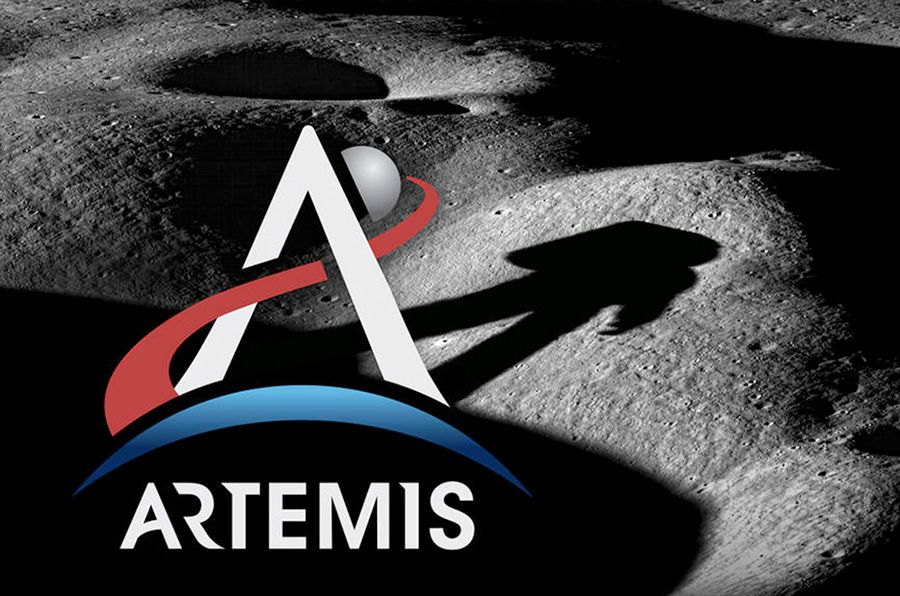
NASA's Artemis program to land humans on the moon by 2024 faces fresh challenges after a fiscal 2021 NASA spending bill allocated less money to the human landing system than what the agency requested.
Congress released an omnibus spending bill Monday (Dec. 21) allotting $23.3 billion to NASA. The bill was released a day after Congress agreed to an accompanying $892 billion coronavirus relief package; all U.S. agencies (including NASA) are now funded through Dec. 28 to avoid a potential government shutdown.
While NASA will receive $642 million more than fiscal year 2020, the bill falls about $2 billion short of the agency's $25.246 billion request, according to SpaceNews. In particular, the human landing system (HLS) program of Artemis only received $850 million, roughly a quarter of NASA's $3.3 billion request.
Related: NASA unveils the 1st 'Artemis Team' astronauts for moon missions
Other elements of NASA's exploration programs, however, were at or above the agency's request, including the Orion spacecraft, the Space Launch System moon megarocket (which is trying to overcome ground equipment testing challenges for the 2021 test flight) and exploration ground systems.
NASA administrator Jim Bridenstine offered no comment yet on Twitter on the new spending bill, but on Dec. 18 he thanked the Senate for unanimously supporting their version of the NASA Authorization Act. "This 100 – 0 vote highlights the Senate's strong support for NASA and sends a clear message of bipartisan endorsement for the Artemis program and the human landing system," Bridenstine said on Twitter.
The Senate bill, however, allocated $1 billion for HLS while the House version had roughly $600 million, SpaceNews said in the same report. Earlier in the month, Bridenstine told the National Space Council that full funding would likely be needed to meet the Trump administration's moon-landing deadline of 2024.
"The budget request gave us what we needed to achieve a 2024 moon landing, and as of right now, this agency is meeting all of its milestones," Bridenstine said Dec. 9. "Ultimately, if we don't get the $3.3 billion, it gets more and more difficult."
The incoming Biden presidency has not yet committed to a timeline for moon landing, but his Democrat Party expressed general support for human moon landings in a document called "Building a Stronger, Fairer Economy."
Some of the other key elements of the NASA spending bill of note, according to SpaceNews, are:
- Funding several science missions that the Trump administration originally sought to cancel, including the PACE and CLARREO Pathfinder Earth science missions, the Roman Space Telescope, and the Stratospheric Observatory for Infrared Astronomy (SOFIA).
- Funding NASA's education programs (which the administration attempted to remove.)
- Drastically cutting NASA's commercial low Earth orbit development program for successors to the International Space Station to $17 million, about 10 percent of its $150 million request.
- Allocating $1.1 billion for space technology programs, at the same level as 2020 but much less than the administration's $1.6 billion request. (Some programs, such as on-orbit servicing and nuclear thermal propulsion, received more money than requested.)
- Telling NASA to launch the Europa Clipper to the icy moon of Jupiter on the SLS providing it is available and if the spacecraft is compatible with the rocket, which seems to refer to concern about these matters over the summer.
- Providing $156.4 million for NASA's planetary defense programs, and asking the agency to "request adequate resources" for the Double Asteroid Redirection Test (DART) – expected to launch next year – and the Near Earth Object Surveillance Mission (NEOSM) space telescope expected to launch in 2025. NASA, however, said earlier in December that it delayed reviewing NEOSM due to budget uncertainty for the mission.
In related news, the Commerce Department received $10 million for the Office of Space Commerce in 2021. The bill tells the office the funding is for a space traffic management "pilot program" with other agencies and industries, SpaceNews stated. The 2021 U.S. spending bill also included $2 billion for Space Force, the newest branch of the American armed forces.
Follow Elizabeth Howell on Twitter @howellspace. Follow us on Twitter @Spacedotcom and on Facebook.
Note: Changes to the Full-Text RSS free service
Article From & Read More ( NASA receives $23.3 billion for 2021 fiscal year in Congress' omnibus spending bill: report - Space.com )https://ift.tt/3rkkfu9
Science
No comments:
Post a Comment